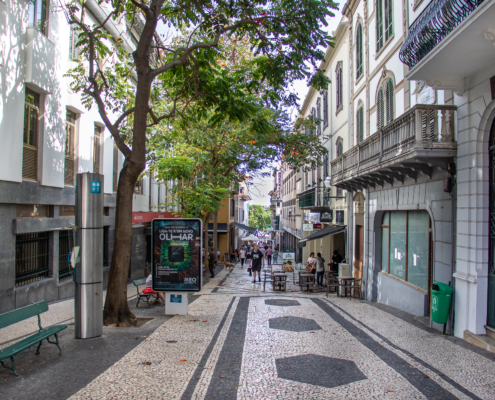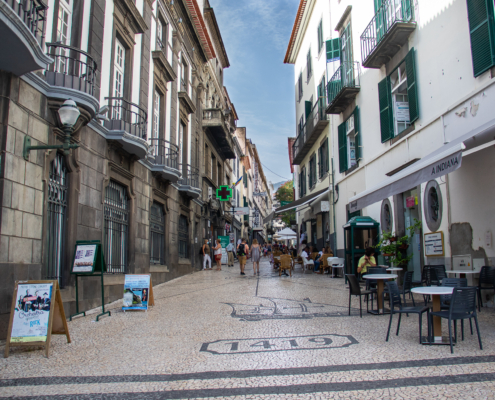Rua João de Tavira
Rua de João de Tavira is one of the busiest streets in Funchal, along with the section of Rua dos Ferreiros that runs parallel to it. Starting in front of the Sé, there are references to this street at the end of the 16th century, when it already appeared on the city plans. The origin of the toponymy is related to the baptismal name of a notary who lived there.
João Tavira, a notary, lived in Funchal at the end of the 15th century. Gaspar Frutuoso writes that “From the main door of the Cathedral there is a street, not very big, which is called João, or Manoel Tavila, because he lived there”. (Frutuoso, 2007: 88)
Once a place of passage of automobiles, the street has been closed for several years to automobile traffic in all its extension.
It is in this street that you can find one of the oldest pharmacies in Madeira, currently, with the status of the shop with history, promoted by the Municipality of Funchal, the “Farmácia Portuguesa”, which retains the old layout of the furniture, and the facade makes dozens of tourists stop every day.
Housed in a listed building, the pharmacy was known to have been rebuilt in 1924. From an architectural point of view, it is a building with a historicist appearance whose façade displays the characteristic elements of the eclecticism of the first quarter of the 20th century. It has an undeniable and exuberant profusion of decorative elements.
Although the inside of the pharmacy presents modern elements and is adapted to the standards currently in force, particularly in terms of accessibility, part of the antique furniture and various decorative elements were preserved, some of them being exposed in the laboratory of the establishment.
The closing of the street provided the disposition of several esplanades along the Portuguese pavement, where several motifs allusive to Madeiran traditions were drawn.
It has three streets that join it to Rua dos Ferreiros, one of the longest in Funchal, which is parallel to it in one section: Rua da Queimada de Baixo, Rua da Queimada de Cima and Rua do Bispo.







